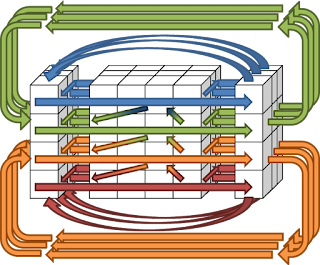drEAmtime – modelling
Finally I can see the end of the red line created by the great post from Ivo Velitchkov. So far I have created following posts:
- drEAmtime – Communication
- drEAmtime – Bridging the Silo
- drEAmtime – Capability Cemetery
- drEAmtime – EPIC SCAN
- drEAmtime – Archetypes
- drEAmtime – WISE SCAN
- drEAmtime – PACE SCAN
- drEAmtime – Frameworks
Two more posts to go, this one and another final one. To quote Ivo:
Then of course modelling itself is believed to help in dealing with complexity. But what kind of modelling? A very complicated architecture diagram does not show complexity. It just shows a lot of effort spent in denial of it.
Actually I personally believe that modelling is a great tool and support communication quite a lot, if applied correctly. I also have a couple of models here in my blog which help me to explain and visualize what I think. Looking at them isolated they are most likely confusing and difficult to understand, which makes it sometimes indeed difficult to use them alone. But in the support of the whole storyline, be it as part of a blog post or as part of a presentation the model helps to align the thinking. The one I refer to most here in the blog is actually the circulatory GLUE system:
Coming back to Ivos post there is jokes circulating around me: “When have you last time had a meeting with Kai without him using the whiteboard?” or “We are trained to sit so that we have free view towards the whiteboard.” Scott Ambler has heavily influenced my thinking with his great website about Agile Modeling besides a lot of great colleagues I had over the years who showed skilled approaches in supporting their line of argumentation with the right model at the right moment. I also liked his Whiteboard Warrior concept, but he has put it offline from his website. There is some traces left in the web though.
One of my key approaches is to draw while I speak. Many words (and I say and write a lot) are more often confusing than enlighting, while a single diagram just shows it. Finding those is not always easy, but the more I model the easier it is to create the right drawing at the moment when it is needed. So my advise is: draw to support your line of thinking, explain in pictures, add a story and the whole gets its own life. Which most likely will return back to you one day, grown over time, transformed and morphed, but beautiful. I try to show Enterprise Architecture and the elements which are delivered via Enterprise Architecture in their full beauty, sometimes I fail, sometimes I succeed.
And a model which is beautiful will carry the story way longer and way more emotional than any dry facts. If Dennis Dutton is right with his assumption than it is rooted in human beeings. I found the success in this approach by try and error. Feedback and comments as always more than welcome.

